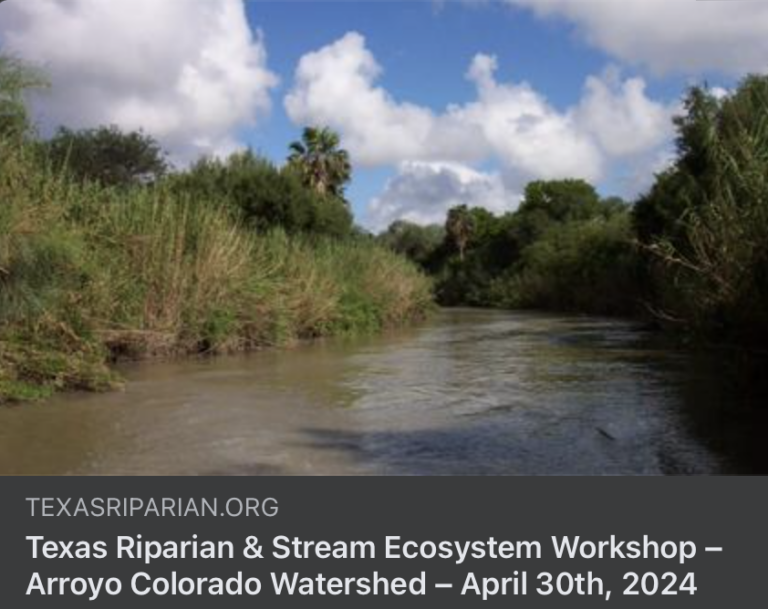April 30 @ 8:00 am – 4:30 pm
The training will focus on the nature and function of stream and riparian zones and the benefits and direct impacts from healthy riparian zones. The riparian education programs will cover an introduction to riparian principles, watershed processes, basic hydrology, erosion/deposition principles and riparian vegetation, as well as potential causes of degradation and possible resulting impairment(s) and available local resources including technical assistance and tools that can be employed to prevent and/or resolve degradation. These one-day trainings in watersheds across the state include both indoor classroom presentations and outdoor stream walks.
The goal is for participants to better understand and relate to riparian and watershed processes, the benefits that healthy riparian areas provide and the tools that can be employed to prevent and/or resolve degradation and improve water quality.
Questions? rio-grande-valley-chapter@gmail.com




